Recent News
Sea Turtle Nest Found On Beach, 15 HatchingsMonday, August 17, 2015
The beach at Alexandra Battery in St. George’s is currently closed to public use as a turtle nest was discovered yesterday on the beach, and 15 hatchlings have been found.
Debris Thrown In Ocean Harming Sea Turtles
Monday, August 17, 2015
Residents are being urged not to throw debris into the ocean after another sea turtle was found dead recently.
THE CLASSROOM COMES TO LIFE FOR JAYSUN PAYNTER
Monday, August 17, 2015
What started out as an ordinary summer Sunday morning has turned into the anticipation of an exciting event for one nine-year-old St. George’s boy. Jaysun Paynter, who lives across the street from the Alexandra Batteray beach, tells Today in Bermuda that yesterday started out like every other weekend at home with his parents and siblings
Bringing Bermuda’s legends to life
Thursday, August 06, 2015
Bermuda’s myths and legends are being brought vividly to life thanks to a creative collaboration by Rockfire Productions.
28 Teams Take Part In BZS Reef Watch Event
Thursday, July 23, 2015
Although the weather may not have fully cooperated on Saturday, June 27th, the Bermuda Zoological Society’s annual REEF Watch citizen science initiative, sponsored by Hiscox, has proven to be another successful year.
About
GovernanceAbout Us
Newsletter
Latest News
Gift & Bookstore
Contact
General Inquiries
info@bzs.bm
Latest News
All the latest updates and news from the Bermuda Aquarium, Museum, and Zoo, one of Bermuda's leading visitor attractions!
Excerpt from WILD News April 2018
When new fish arrive at BAMZ, they must first undergo a minimum of 30 days quarantine in order to diagnose any marine parasites which, if left untreated, can infect the other inhabitants of the aquarium hall tanks.
On Thursday, 22nd March, Patrick Talbot, Curator of the Bermuda Aquarium, Museum and Zoo, with the assistance of Marine Collector, Jorge Sanchez, conducted the examination of the quarantined blue parrotfish, queen parrotfish, and rainbow parrotfish before their transfer into the display tanks.
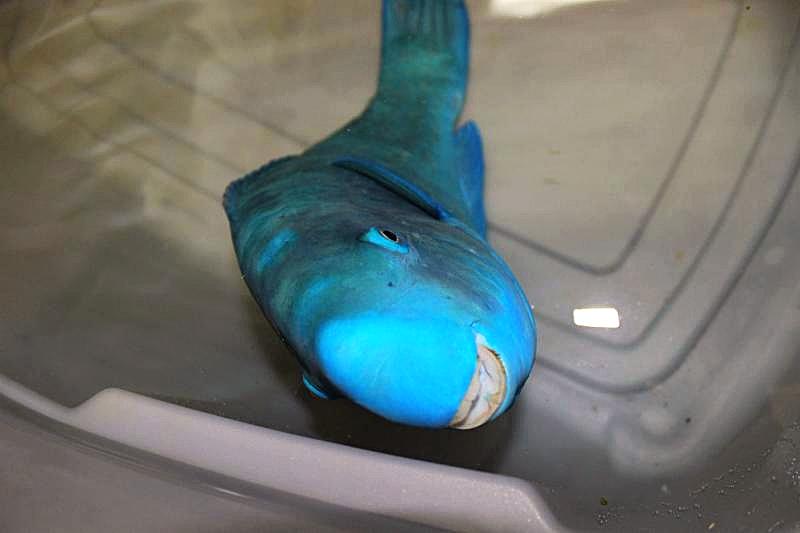
Blue parrotfish going under anesthetic

Blue parrotfish being removed from anesthetic
Before each fish was examined, they were first anesthetized in a solution rendering them unconscious and insensible to any pain. The length of time it took for each fish to go to sleep, was also the approximate amount of time it would remain sedated, giving Mr. Talbot an idea of how much time he had to take samples from the fish.
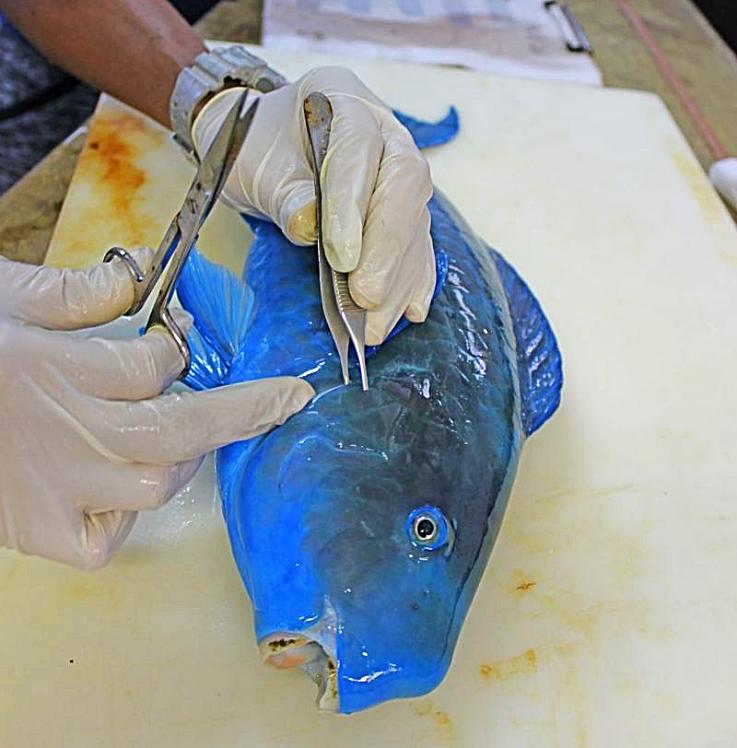
Blue parrotfish having its gills clipped
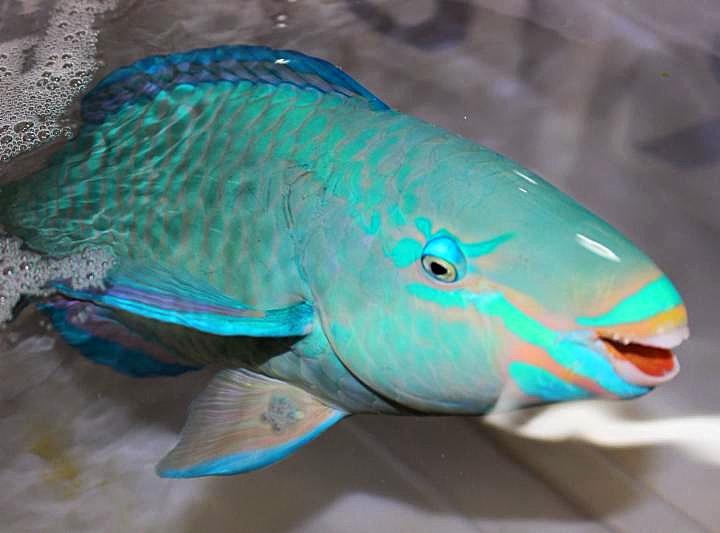
Queen parrotfish going under anesthetic
Each fish went through the same procedure; after sedation, they were removed from the water and placed on a cushion wrapped in plastic. Mr. Talbot quickly took a scale scrape, and a gill clipping - basically taking a sample of the skin mucous covering the scales and a tiny gill biopsy. The fish was then placed in a tub of fresh water, and Mr. Sanchez bubbled oxygen in the water surrounding the gills. The fresh water acted as final medication of sorts, as it would kill most external parasites (should there be any) and the bubbled gas helped ensure the fish had oxygen during its recovery from the anesthetic. After a few minutes, the animal was responsive and returned to a separate tank to await results of the procedure.
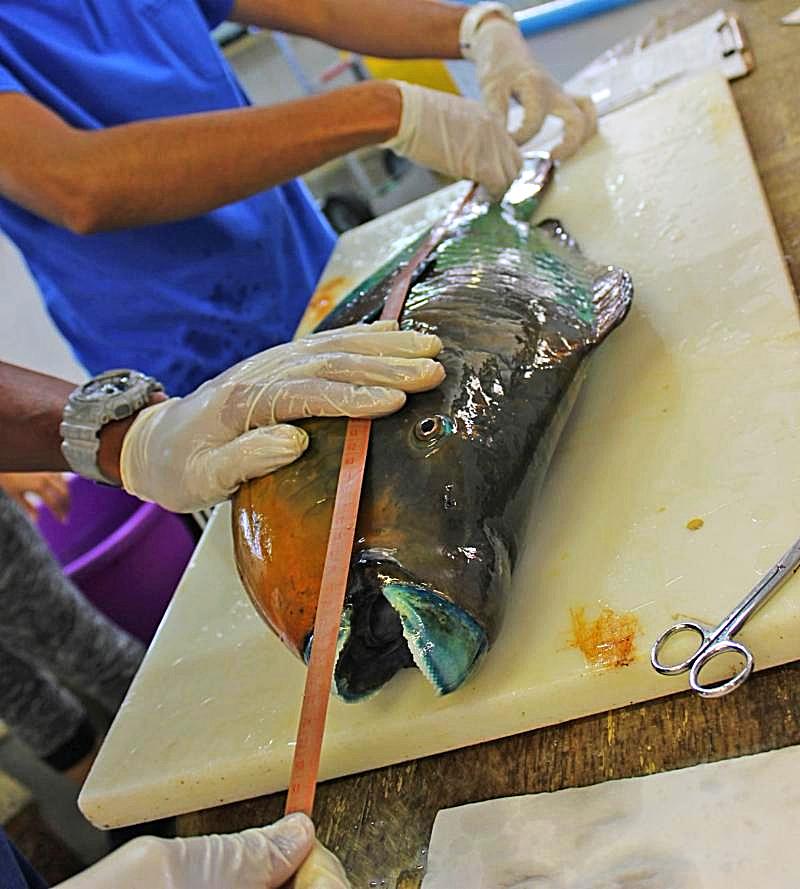
Rainbow parrotfish being measured
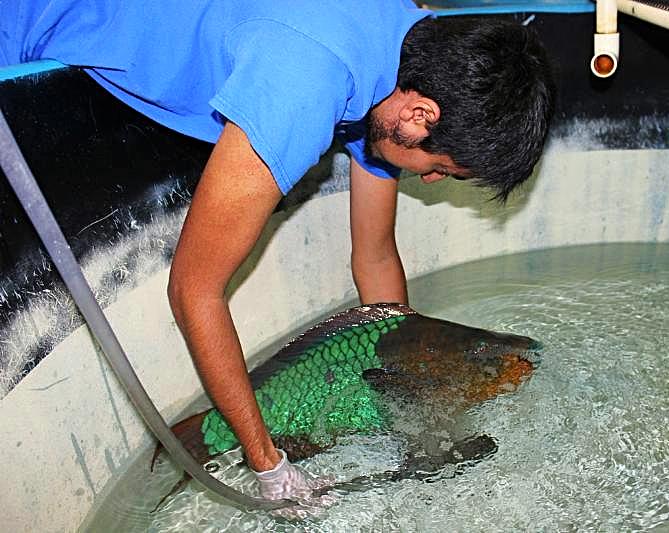
Mr. Sanchez running oxygen over the Rainbow parrotfish gills to aid in its recovery from the anesthetic
Once all the fish were sampled, Mr. Talbot took the scale scrapings and the gill clippings into the laboratory to be examined under a microscope for parasites infections, such as protozoa. If a parasite was found on either sample, the fish would have to go through another two weeks of quarantine and further treatment.
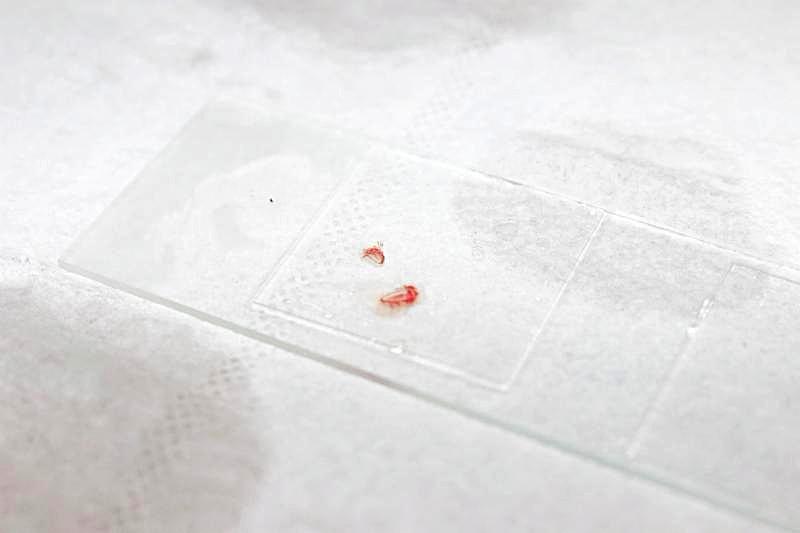
Gill clippings on a slide ready to be examined under a microscope
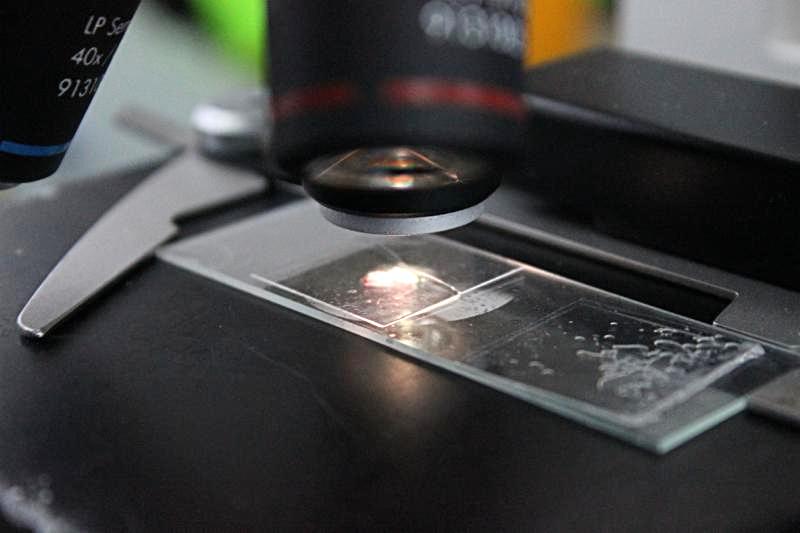
Gill clippings being examined

400x magnification of gill clippings
Thankfully, upon completion of the examination, all three fish were parasite free and received a clean bill of health. The queen and blue parrotfish were placed in the parrotfish habitat in the Aquarium Hall, and the rainbow parrotfish was placed in the North Rock habitat.
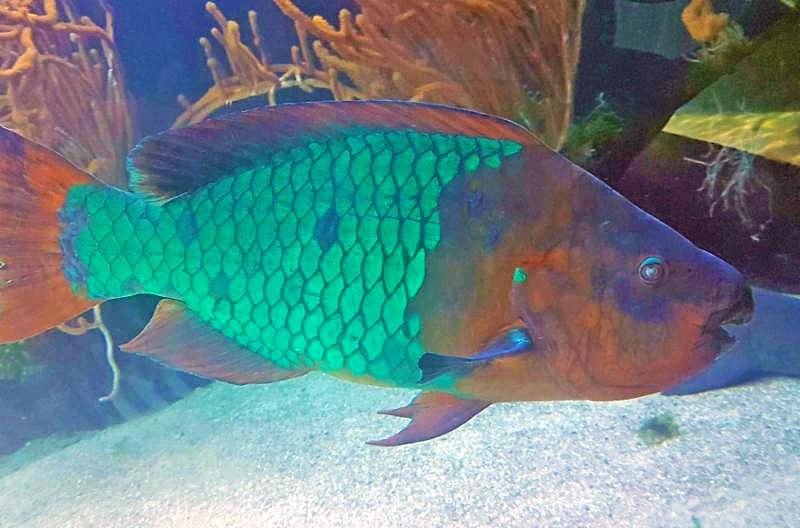
Rainbow parrotfish in the North Rock habitat
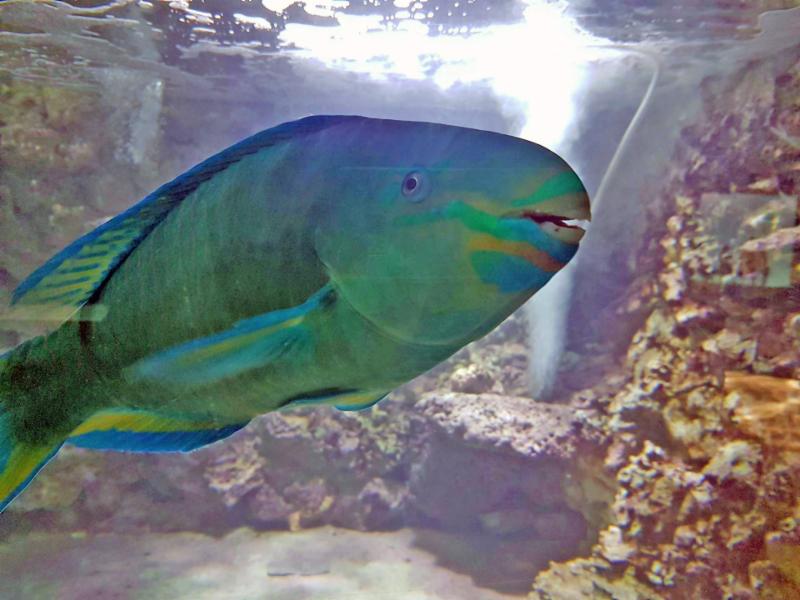
Queen parrotfish in the parrotfish habitat


